 BMW R 1250 RT - Owner's Manual > Shift assistant
BMW R 1250 RT - Owner's Manual > Shift assistant
- with shift assistant Pro OE
Shift assistant Pro
Your vehicle is equipped with a Pro shift assistant, a system originally developed for racing and now adapted for touring. It permits upshifts and downshifts without declutching or closing the throttle in virtually all load and rpm ranges.
Advantages
- 70-80 % of all gearshifts on a trip can be done without using the clutch.
- Less relative movement between rider and passenger because the shift pauses are shorter.
- It is not necessary to close the throttle valve when shifting under acceleration.
- When braking and downshifting (throttle valve closed), engine speed is adjusted by blipping the throttle.
- Shift time is shorter than a gearshift with clutch actuation.
In order for the system to identify a gearshift request, the rider has to move the gearshift lever from its idle position in the desired direction against the spring force through a certain "overtravel" at ordinary speed or rapidly and keep the gearshift lever in this position until the gearshift is completed. It is not necessary to increase the force applied to the shift lever while shifting is in progress. Once the gearshift has completed the shift lever has to be fully released before another gearshift with the Pro shift assistant can take place. When shifting gears with the Pro shift assistant, the rider has to keep load state (throttle grip position) constant before and during the gearshift.
A change in the position of the throttle grip during a gearshift can cause the function to abort and/or lead to a missed shift.
The Pro shift assistant provides no assistance for the gearshift if the rider declutches.
Downshifting
- Downshifting is assisted until maximum rpm for the target gear to be
selected is reached.
This prevents overrevving.
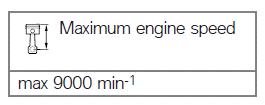
Upshifting
- Upshifting is only possible when the current speed is higher than the respective release threshold of the next higher gear.
- This prevents the engine from dropping below idle speed.
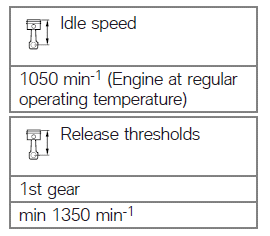

Hill Start Control
Hill Start Control function
Hill Start Control assistant prevents the motorcycle from rolling backwards uncontrolled on gradients by intervening specifically with the ABS brake system without the driver having to constantly operate the brake lever.
Pressure in the rear brake system is built up when Hill Start Control is activated in order to keep the motorcycle stationary on an incline.
The brake pressure in the brake system is dependent on the gradient.
Effect of an incline on brake pressure and drive-off behaviour
- If the motorcycle is stopped on a gentle incline, only low brake pressure is built up. In this case, the brakes are quickly released when driving off. The motorcycle can be moved off more gently. It is not necessary to turn the throttle grip again.
- If the motorcycle is stopped on a steep incline, high brake pressure is built up. In this case, the brakes take longer to release when driving off. More torque is required for driving off which also requires the rider to turn the throttle grip again.
Behaviour when the motorcycle rolls or slips
- If the motorcycle rolls when Hill Start Control is activated, the brake pressure is increased.
- If the rear wheel slips, the brake is released again after approx. 1 m. This prevents, for example, slipping due to a blocked rear wheel.
Releasing brake when stopping the engine or timeout
Hill Start Control is deactivated when the engine is stopped using the emergency-off switch, when the side stand is folded out or after timeout (10 minutes).
In addition to the indicator and warning lights, the rider should be made aware that Hill Start Control has been deactivated by the following behaviour:
Brake warning jolt
- The brake is released briefly and reactivated immediately.
- This creates a jolt which the rider feels.
- The ABS brake system with partially integral function sets a speed of approx. 1-2 km/h.
- The rider must brake the motorcycle manually.
- After two minutes, or when the brake is actuated, Hill Start Control is completely deactivated.
NOTICE The holding pressure is released immediately without a brake warning jolt as soon as the ignition is switched off.
ShiftCam
Functional principle of ShiftCam
The vehicle features BMW Shift- Cam technology for varying valve timing and valve lift on the intake side. The heart of this technology is a one-piece shifting intake camshaft that has two lobes for each valve: a partial-load cam and a full-load cam.
The partial-load cam is fine-tuned for consumption optimisation and engine smoothness.
As well as adapting valve timing, the partial-load cam also reduces intake-valve lift. With the partial-load cams activated, moreover, the lobes for the cylinder's left and right intake valves produce staggered valve lift and offset angles of rotation. Consequently the two intake valves open at very slightly different times and the distance to which they open also differs. The advantage: The fuel/air mixture flowing into the combustion chamber is swirled more thoroughly and combusted effectively - so all in all the fuel is utilised more efficiently and engine operation is perceptibly smoother. The full-load cam is designed for optimised engine power and it maximises intake valve lift. The intake camshaft is shifted axially to vary valve timing and valve lift. The pins of an electromechanical actuator engage a shift gate on the intake camshaft. This permits load-dependent and speed-dependent actuation of the intake valves and, consequently, a no-compromises combination of performance and low fuel consumption.
See also:
 BMW R 1250 RT - Owner's Manual > Riding mode
BMW R 1250 RT - Owner's Manual > Riding mode
Riding mode selection In order to adapt the motorcycle to weather conditions, road conditions and the rider's riding style, there is a choice of three riding modes: RAIN ROAD with riding modes Pro OE DYNAMIC
 BMW R 1250 RT
BMW R 1250 RT Kymco Agility 50
Kymco Agility 50 Piaggio Liberty 50
Piaggio Liberty 50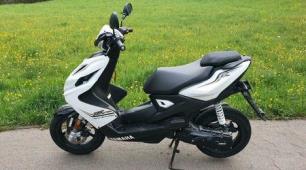 Yamaha aerox NS50
Yamaha aerox NS50 Aprilia SR50R
Aprilia SR50R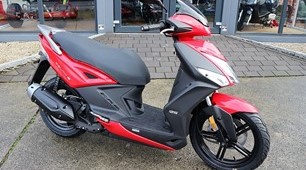 Kymco Agility 50
Kymco Agility 50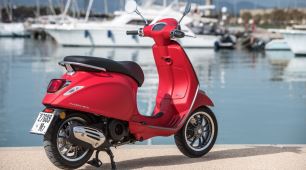 Vespa Primavera 50
Vespa Primavera 50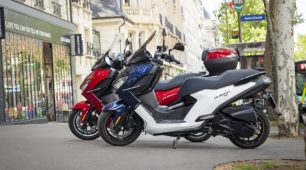 Peugeot Speedfight
Peugeot Speedfight